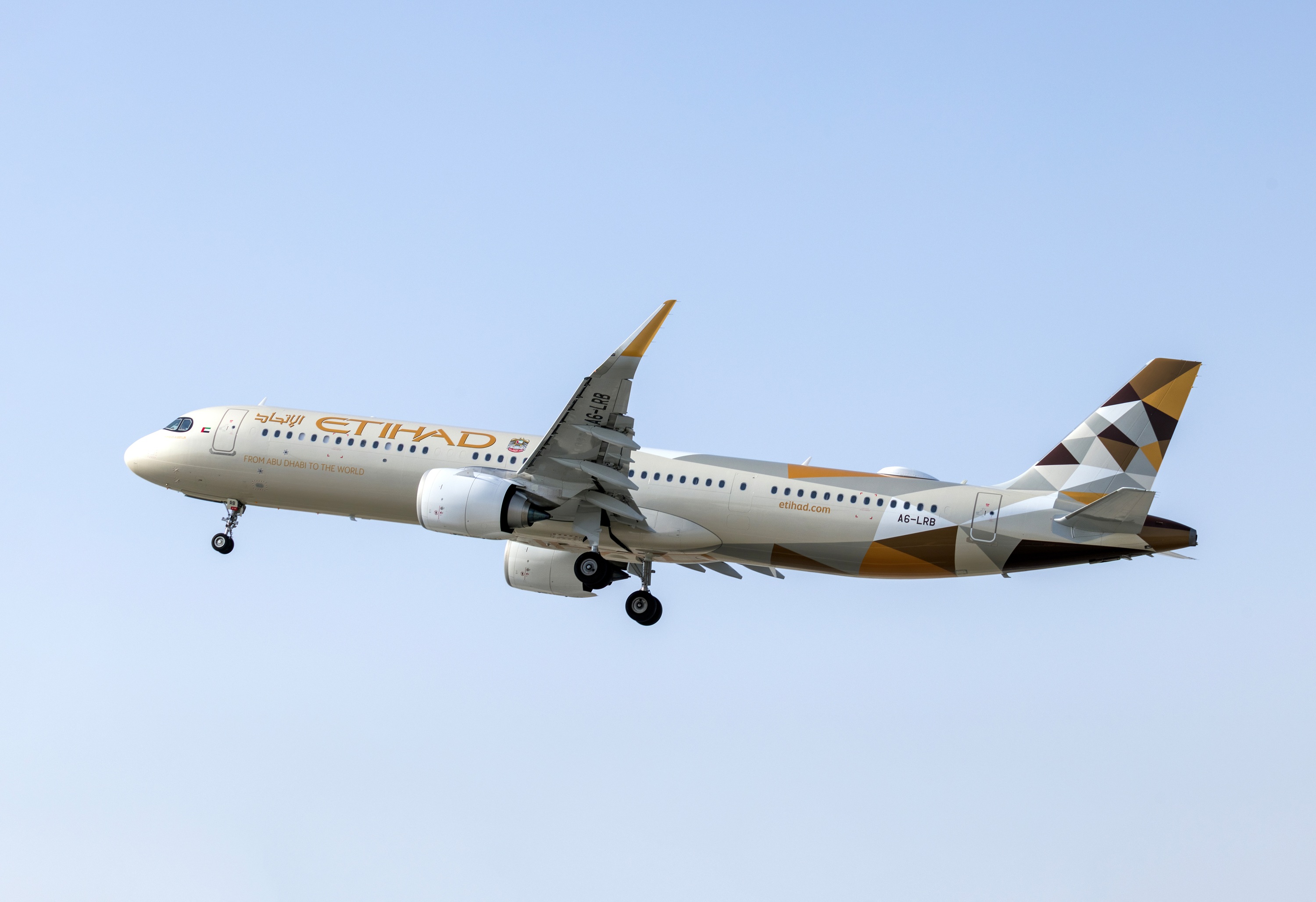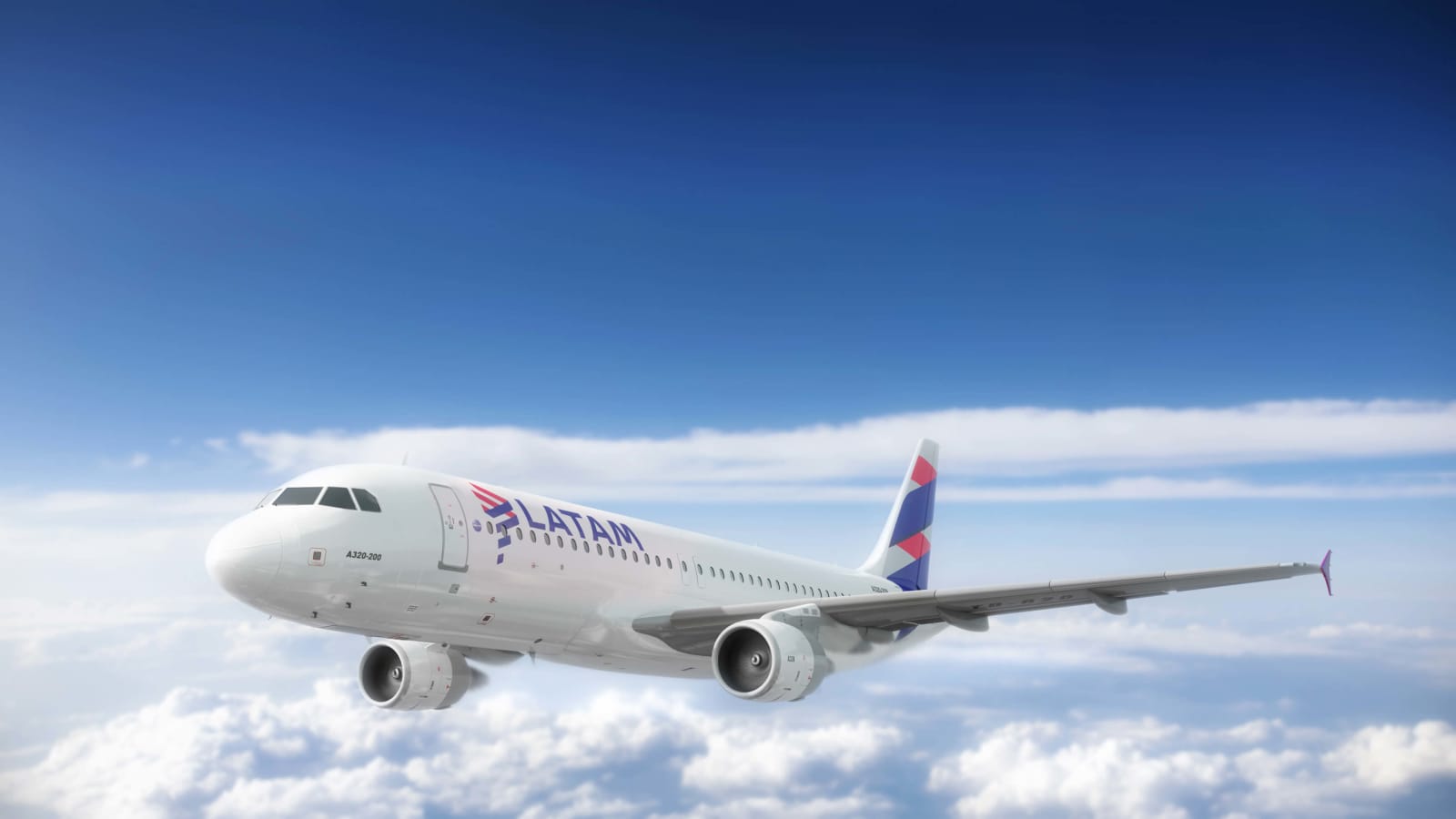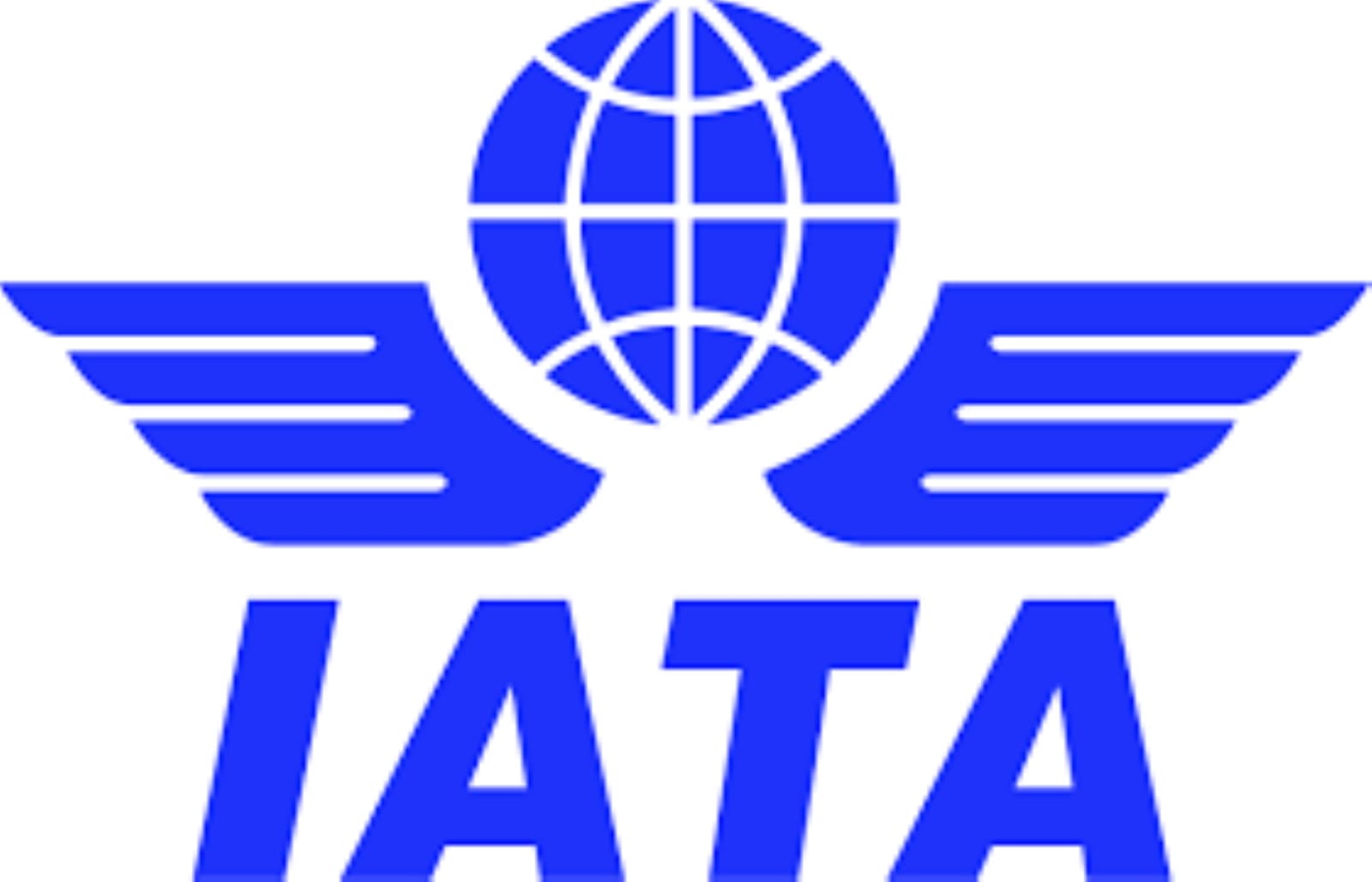May 24, 2024
International travel in Asia continues to surge toward pre-pandemic levels
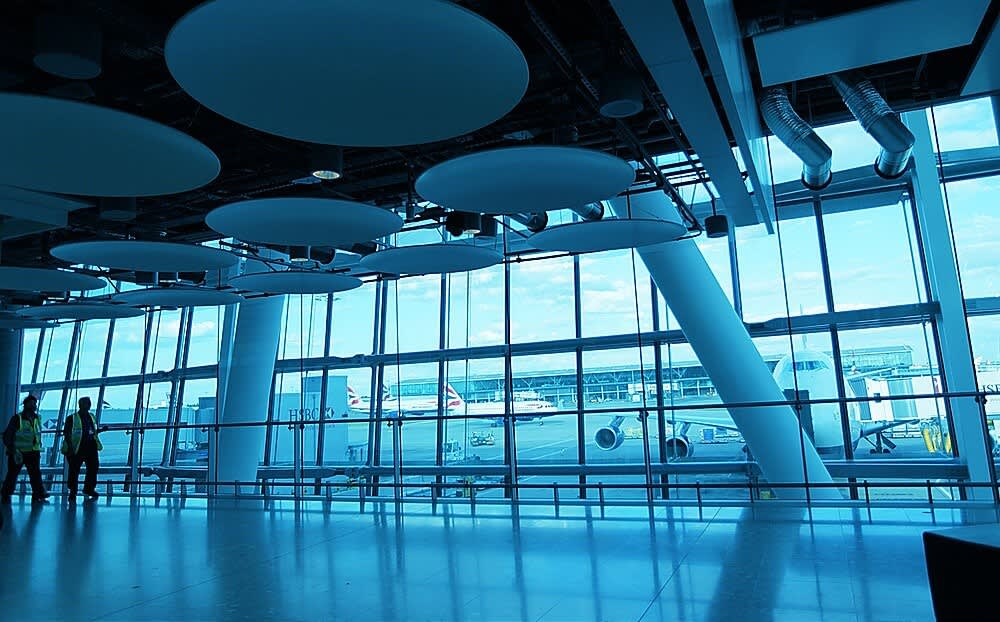
In February of this year, Asia Pacific airlines saw passenger demand grow 53% year-on-year, which indicates international traffic to and from the region is still surging toward pre-pandemic figures
Serving as both a source and destination region, the increase of international visitors within Asia Pacific (APAC) is supported by Asia, with mainland China playing a key role in traffic flow. Elaborating on the current state of the travel industry in APAC, Joanna Lu, Head of Consultancy Asia at Cirium Ascend Consultancy, notes CiriInum’s data shows the most improved international connection to APAC countries is led by United Arab Emirates, with departing international seats up 15%. “However, the main international connection is still driven by the capacity within Asia,” she says. According to Lu, Singapore, Japan and South Korea are the three markets generally recovered from the pandemic; China outbound travel to APAC is still almost 30% down versus 2019. “The main source(s) of inbound seats for Southeast Asia are also mainly from within the region, with Indonesia, Malaysia, Singapore and Thailand leading. China inbound seats has only recovered to around 60% of the 2019 level."
In February of this year, Asia Pacific airlines saw passenger demand grow 53% year-on-year, which indicates international traffic to and from the region is still surging toward pre-pandemic figures. “The 2023 international passenger demand for Asia Pacific airlines recovered to 72.7% of 2019 levels,” shares Dr. Xie Xingquan, Regional Vice President for North Asia at International Air Transport Association (IATA). “International traffic within Asia reached 66.2% of 2019 levels in 2023, while the traffic between Asia and the Southwest Pacific reached 77.3%.” He says this is similar to the recovery in other markets where restrictions were removed earlier.
Speaking about the challenges in terms of restoring full connectivity and advancing traffic and financial recovery, Lu argues the concept of “full connectivity” does not exist, since changing environmental factors often results in the shift of travel patterns, which impacts traffic and capacity.
“Geopolitical tensions and regulatory hurdles can disrupt aviation connectivity and hinder the growth of the sector. Fostering regional cooperation and harmonizing regulatory frameworks are essential for promoting a healthy environment for aviation development in Asia Pacific.
“The pandemic has led to significant disruptions in aircraft supply chain, airlines’ financial performance, and has reshaped human lifestyles, consumer preferences and behaviors, with a growing emphasis on health, safety and flexibility. Airlines and airports need to adapt their business models and service offerings to meet evolving customer expectations,” says Lu.
On how airlines have refocused their priorities considering the slower return of the Chinese market, Xingquan comments while domestic traffic in China has experienced far more growth than international traffic there is reason to be optimistic. From the reinstatement of its 144-hour-free-transit policy at certain points of entry to the extension of visa free travel to a number of Asian and European countries, government efforts are in place to relax visa conditions for foreigners.
In the case of Chinese travelers, the segment has shown a growing interest in cultural and nature-based tourism experiences such as visits to historical landmarks, heritage sites and natural attractions. “Family and group travel remain popular among Chinese travelers, especially for multi-generational trips and special occasions,” says Lu. “Travel packages and services catering to families including child-friendly accommodations and activities are likely to be in demand.” Also, a relatively small percentage of Chinese travelers continue to value quality experiences and luxury travel options.
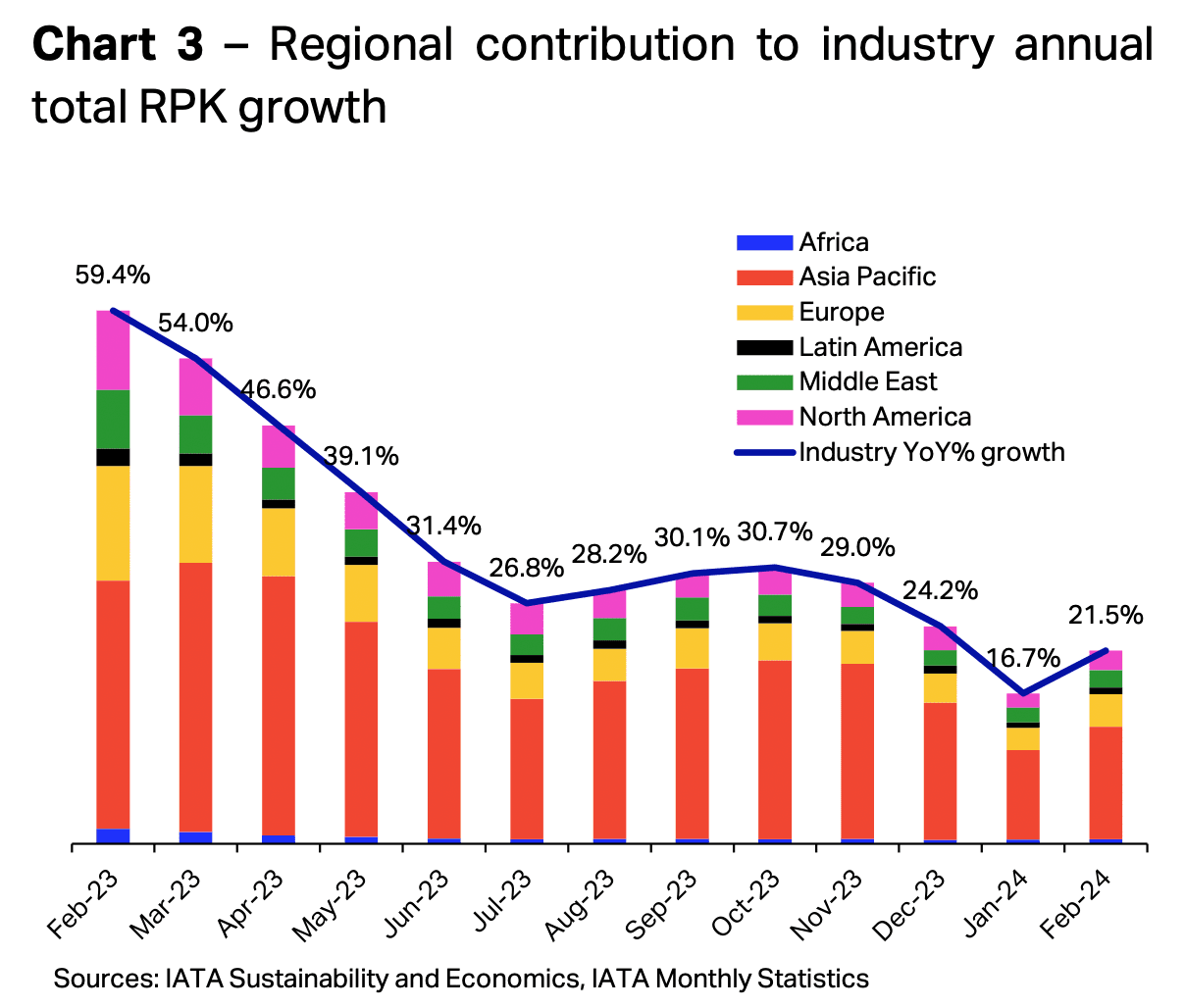
As shared by IATA, the 21.5% uptick in year-on-year growth of industry-wide passenger traffic in February followed four months of decline; Asia Pacific delivered the largest contribution to the industry’s growth explained by high activity in China’s domestic market, as well as the return of international travel from Asia
A look at Southeast Asia
As discussed at Routes Asia 2024 in Langkawi, Malaysia, the Southeast Asian market is on track to be among the fastest-growing regions in the world and the untapped potential within the air travel industry is unmatched. Speaking at the event in February, ACI Asia Pacific and Middle East Director General Stefano Baronci remarked that Indonesia is expected to rank fourth among the globe’s busiest passenger markets by 2042. ACI estimates the Philippines, India, Indonesia and Thailand will top the fastest-growing markets between 2023-42, with CAGR between 6.2%-7.2%.
“Typically, any long-term growth in passenger demand is driven by macroeconomic and demographic factors. And how airlines will respond to this projected growth is a matter for individual airlines to decide. What is key is that if the industry is to continue growing, it needs to do so sustainably. Airlines committed to Net Zero 2050 in 2021. This was reinforced by the long-term aspirational goal commitment by International Civil Aviation Organization member states in 2022,” explains Xingquan.
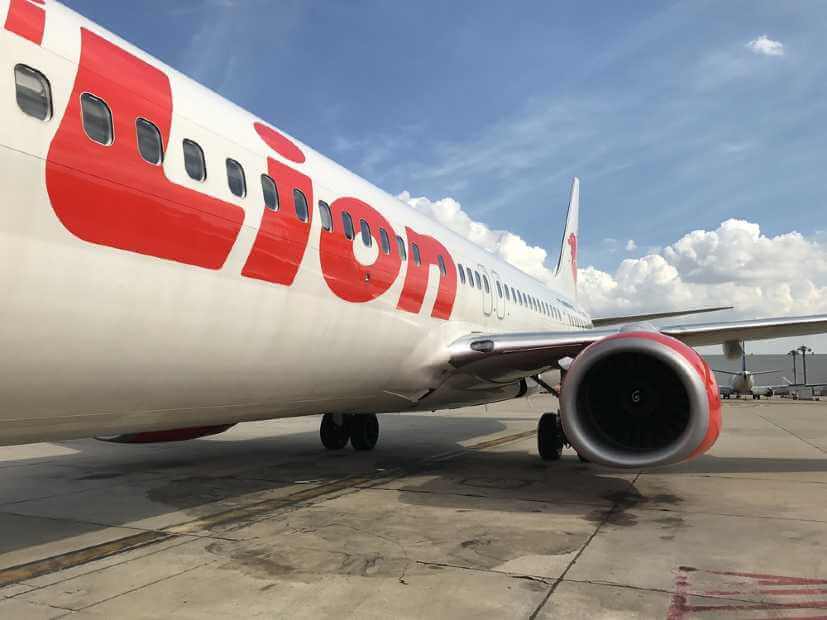
With 3.4 million seats, Lion Air was reported as Southeast Asia’s largest carrier by seat volume in April; the airline’s capacity last month was 14% higher than in April 2019
By the numbers
According to data collected by OAG for April 2024, total airline capacity in Southeast Asia was 38.8 million seats (59% domestic; 41% international), which is down 9.8% versus April 2019. Total seat capacity in the region increased 12% compared to April 2023. Regarding seats by country, Indonesia remained the highest ranked country at 11.9 million seats and accounted for 31% of the region’s air capacity; Thailand ranked second at 6.9 million seats and accounted for 18% of the region’s capacity. The leading data platform for the global travel industry reported the top domestic route in Southeast Asia remained Hanoi (HAN) to Ho Chi Minh City (SGN); Singapore continues to be a key international hub in the region, home to six of the top 10 international routes in the region starting or ending there. Plus, Lion Air remained Southeast Asia’s largest carrier by seat volume, with 3.4 million seats (based on departing seats). The airline’s capacity last month was 14% higher than in April 2019.
“The expansion of low-cost carriers [in APAC] has a significant impact on stimulating travel and tourism within the region. This, in turn, contributes to the growth of the tourism sector by increasing visitor arrivals, supporting local businesses, and generating economic activity in destination cities.
“Successful low-cost carriers continually expand their route networks to tap into new markets, increase market share, and capture passenger demand. This involves identifying underserved routes, launching new routes with high demand potential, and strategically positioning hubs to facilitate seamless connections,” concludes Lu.
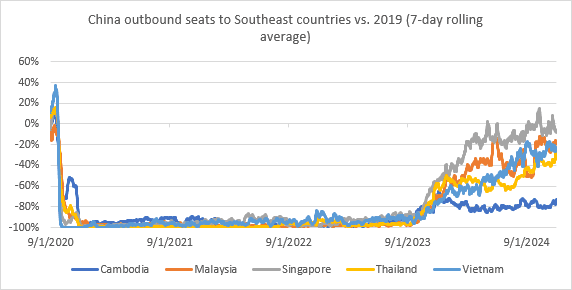
China outbound travel to APAC is still almost 30% down versus 2019
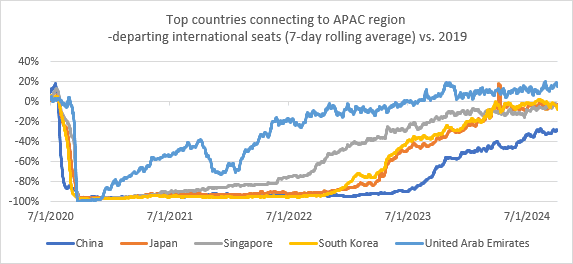
Cirium’s data shows the most improved international connection to APAC is led by United Arab Emirates, with departing international seats up 15%


